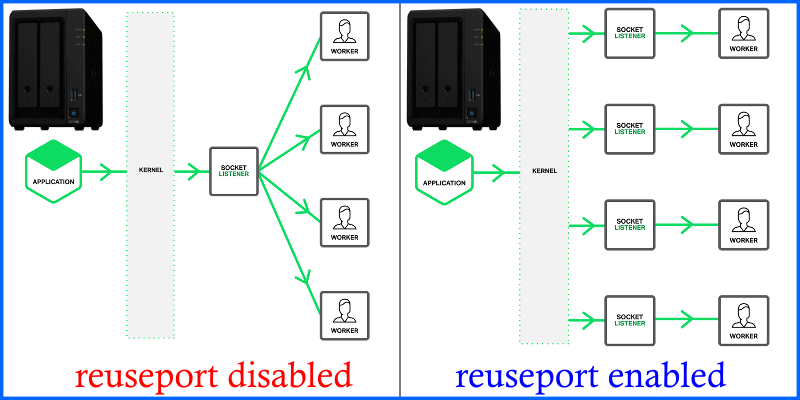Reuse Port

In general, there are benefits to using reusable ports when dealing with streaming data. Reusable ports can help improve the efficiency, scalability, and maintainability of your application. Here are a few reasons why:
Resource management: Reusing ports can help reduce the resources used by your application. When multiple connections use the same port, the operating system doesn't need to allocate separate resources for each connection, which can help improve overall system performance.
Scalability: By allowing multiple connections to use the same port, you can more easily scale your application to handle a large number of connections. This can be particularly useful for streaming applications where a large number of clients might be connecting at once.
Maintainability: Using reusable ports can help simplify your application's architecture and make it easier to maintain. With fewer ports to manage, it can be easier to diagnose and fix issues that might arise.
In order to use reusable ports in your streaming application, you will need to use a protocol and programming techniques that support this feature. One common way to achieve this is by using the User Datagram Protocol (UDP) and setting the SO_REUSEADDR and/or SO_REUSEPORT socket options in your application's networking code. However, keep in mind that UDP is a connectionless protocol, which means that it does not guarantee the delivery or the order of the data being sent. This might not be suitable for all streaming applications.
Alternatively, you can use the Transmission Control Protocol (TCP) with the SO_REUSEADDR and/or SO_REUSEPORT socket options. TCP is a connection-oriented protocol, which means that it guarantees the delivery and order of the data being sent. However, using reusable ports with TCP can be more complex and may not provide the same level of performance benefits as using UDP.
Overall, using reusable ports in your streaming application can provide several benefits, but you'll need to carefully consider the trade-offs and choose the right protocol and techniques to meet your application's specific requirements.
